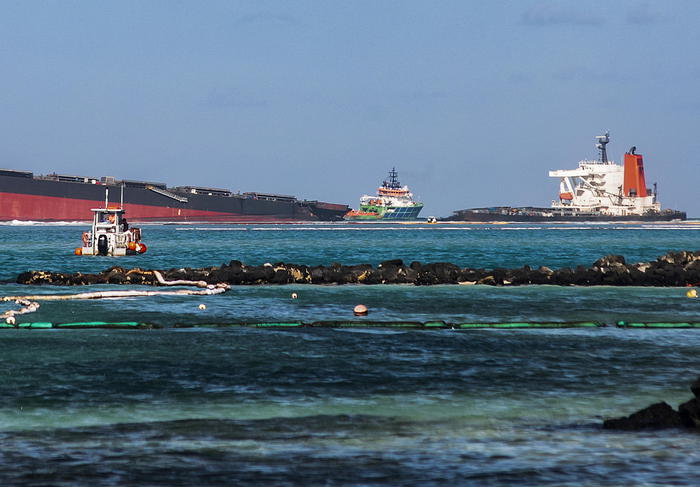"Concern is growing for the consequences to the entire ecosystem and for the damage that could last for decades or be perennial, in the well-preserved area in the South East" of Mauritius after the incident to the Japanese ship that ran aground on July 25th in the reef leaking fuel and then broke in two. Accident, explains Alessandro Giannì, campaign manager for Greenpeace Italy, which is putting at risk "a fragile and unique environment", where coral reefs that can turn white and the reproduction of turtles are threatened, as well as coastal swamps protected by the Ramsar Convention with mangroves where some species of typical reptiles and birds live and which are at risk. The waves cause aerosols that carry the pollutants to the ground ".
On the route of the accident, says Isabella Pratesi, director of the WWF conservation program, "in the last month alone more than 2 thousand ships have passed with fuel that is toxic. From the 1989 Exxon Valdez tanker accident we still see damage in marine organisms", he recalls, noting that "there is little attention and little control" towards the protection of "these marine environments that are so important to the planet". In the "last decades - adds Pratesi - we have lost 50% of the coral reefs worldwide due to the warming of the oceans".
The causes of the disaster are still uncertain which involved "not an oil tanker or a sea cart but a 300-meter ship bound for Brazil to load iron ore" explains Giannì, hypothesizing that "the route may have been too close to the rocks to shorten the travel time ", a practice" risky for such a fragile area ". Among the hypotheses there would also be "a cartography not faithful to the presence of reef, or mechanical damage or human error" continues Giannì, referring to the voice of a "birthday party that would have been in progress at that moment without the presence of the commander on the bridge ".
Of the 4 thousand tons of fuel on board, "3,800 would have been of the 'heavy' type (heavy fuel-bunker) that is used in navigation and the rest diesel, for maneuvers, which contains more harmful and carcinogenic substances". The problem, Giannì points out, is that "on the spot there are no suitable equipment to contain the dispersion, so much so that the local population has intervened in slippers with rudimentary means, such as ecological fiber barriers and hair". Then more suitable aid came from France and Japan, but another problem is "avoiding the use of dispersants that make fuels melt but do not eliminate them". Giannì also recalls that "in 400 years part of the barrier has been lost due to agricultural activity, mud, pesticides and sediments" but the south-east coast was "protected, with great conservation efforts". In the face of "scarce information", concludes Giannì, in the meantime some specimens of 3-4 very rare bird species have been protected by moving them to other protected areas ".
Mauritius: Greenpeace, fear of perennial damage to the ecosystem
2020-08-17T17:13:01.359Z

(HANDLE)"Concern is growing for the consequences to the entire ecosystem and for the damage that could last for decades or be perennial, in the well-preserved area in the South East" of Mauritius after the incident to the Japanese ship that ran aground on July 25th in the reef leaking fuel and then broke in two. Accident, explains Alessandro Giannì, campaign manager for Greenpeace Italy, which is putting ...
